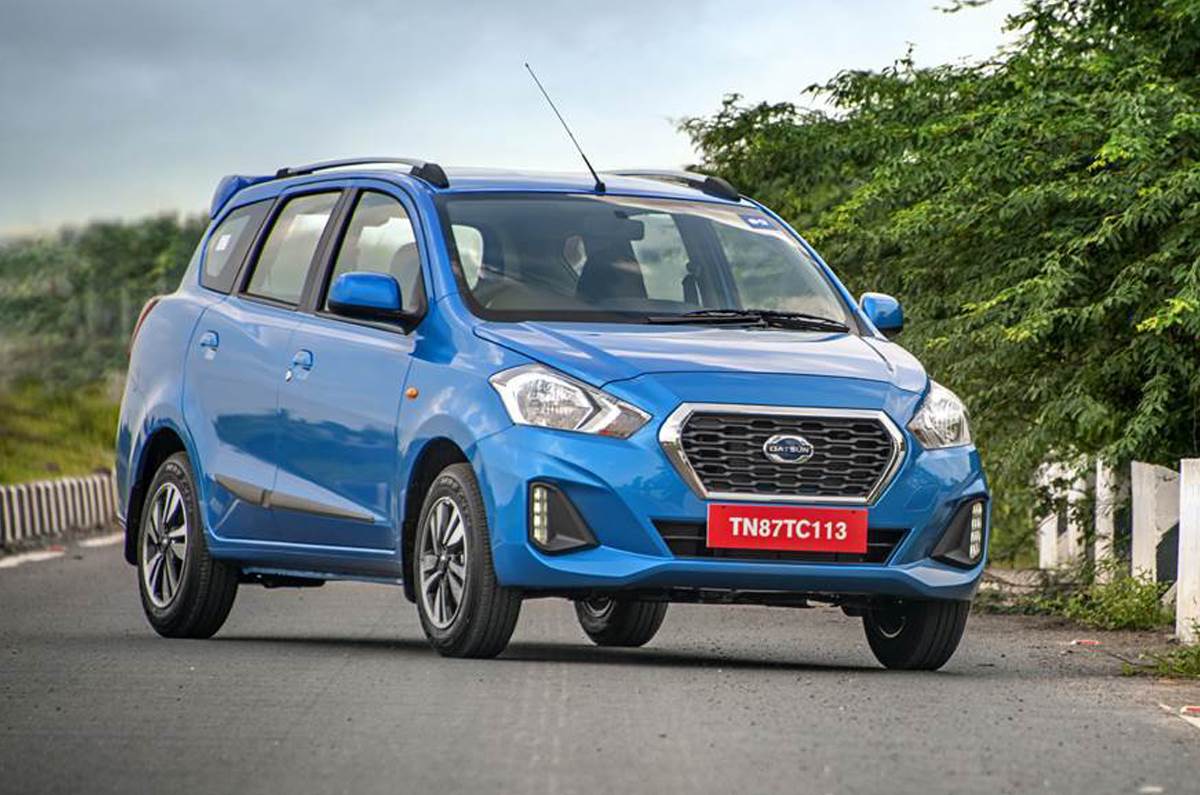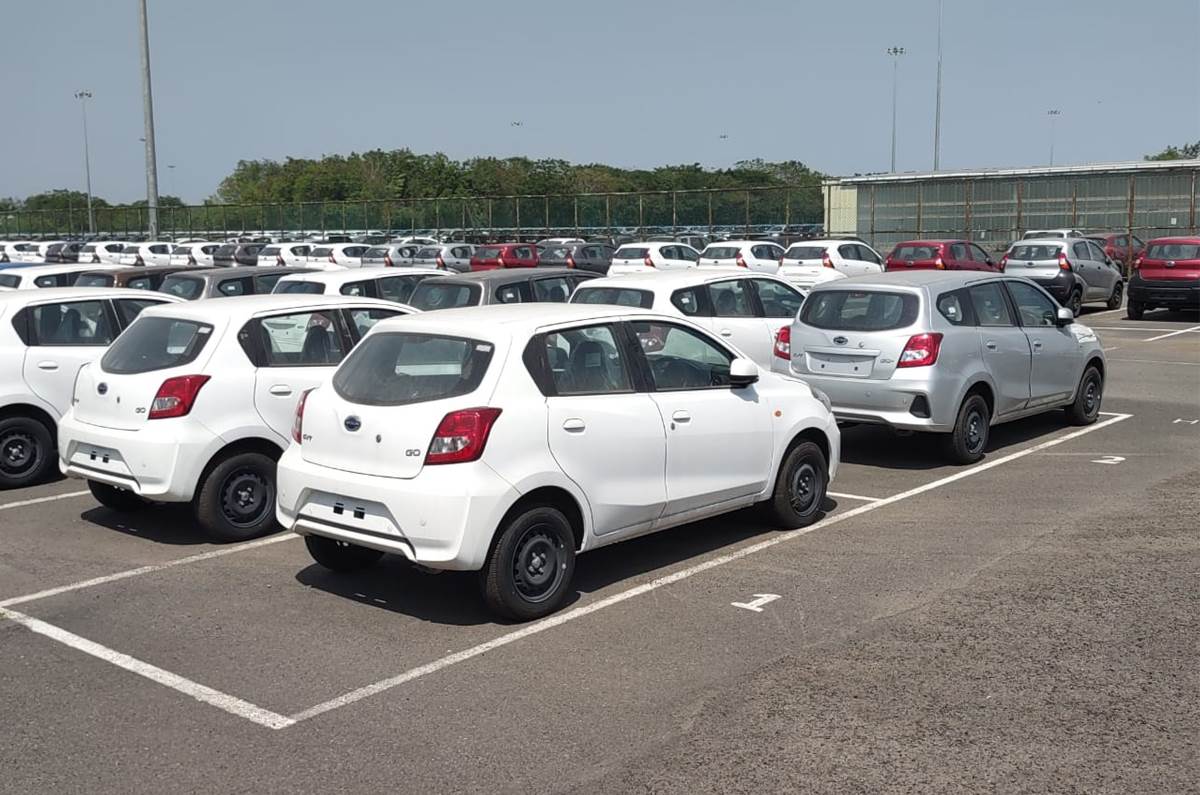India was one of the last markets where Datsun was still operational and is being put to rest for the second time in its 91-year-old history.
Nissan has finally pulled the plug on the Datsun brand in India. Back in October 2019, we had reported that Nissan was planning to phase out the Datsun brand globally, and following the discontinuation of the brand’s operations in Russia and Indonesia, Datsun’s India operations have now ended after barely a nine-year stint.
- Datsun had three models on sale in India – Go, Go+ and Redigo
- Nissan also exported made-in-India Datsun models to South Africa
- Operations in Russia and Indonesia were discontinued in 2020
Datsun discontinues India operations
While production of the Go and Go+ models had already ceased a while ago, Nissan has now confirmed to Autocar India that the Redigo too has bowed out of production. In an official statement, the company said, “As part of Nissan’s global transformation strategy, the company is focusing on core models and segments that bring the most benefit to customers, dealer partners and the business. Production of the Datsun Redigo has ceased at the Chennai plant.”
In the 12-month period between January-December 2021, Datsun sold a mere 4,296 units in the Indian market, which comprised a market share of just 0.09 percent at the time.
What does this mean to existing Datsun customers?
Nissan has assured its existing Datsun customers of continued support with service, aftermarket parts and warranty services. Given that Nissan has a strong network across the country, customers should be able to access service touchpoints easily.
In its statement, Nissan said, “We can reassure all existing and future Datsun owners that customer satisfaction remains our priority, and we will continue to provide the highest levels of aftersales service, parts availability and warranty support from our national dealership network.”
Datsun: a brief overview in India
Nissan revived the Datsun brand in 2013 – 32 years after it was put to rest for the first time – with much enthusiasm as it hoped to serve emerging markets like India, Indonesia and Russia, with small, inexpensive cars. However, as we know now, none of that materialised. Datsun’s positioning in Nissan’s global line-up was to serve entry-level markets, with Nissan in the middle and Infiniti, Nissan’s luxury brand, at the top. India was, of course, the first market where Datsun relaunched with the world premiere of its first model – the Go hatchback – in Delhi in July 2013.
Ahead of launch, Datsun had showcased the Go in more than 90 cities across the country as a part of its pan-India road show
The Go went on sale by early 2014, and its biggest talking point was naturally its price, which then ranged between Rs 3.12 lakh-3.69 lakh (ex-showroom), although it was packaged like a much larger and spacious hatchback than its price would suggest. Thanks to its affordability, the Go was marketed to first-time car buyers, although sales for the budget hatchback never really took off.
Following the Go, Datsun introduced the Go+ compact MPV in India in early 2015. The Go+ was essentially a three-row version of the Go hatchback, but being a sub-4-metre car, it benefitted from the lower taxation. Even though the Go+ was priced very attractively, the third row of seats were unusable, and the lack of essential features on the lower trims were a sign of cost cutting.
Both the Go and Go+ were based on the low-cost Micra platform, which received a comprehensive facelift in 2018 – cosmetic updates and more features on the inside – and were also updated with a CVT automatic gearbox in 2019, making them the most affordable CVT-equipped models at the time. The Go and Go+ were also subsequently updated for the BS6 emission norms in April 2020, but the brand’s efforts never quite translated into sales.

Despite a comprehensive facelift to both Go and Go+, it failed to make any serious impression on customers.
Datsun’s third and final model for India, the Redigo, was introduced in June 2016 and was positioned below the Go hatchback. Based on the CMF-A architecture, the Redigo was a sister model to the Renault Kwid. Despite its edgy styling, city-friendly size and affordability, the Redigo failed to make any serious impact, selling three times lesser than its main rival, the Kwid. The Redigo was also subsequently updated with an AMT gearbox, a larger 1.0-litre engine and a comprehensive facelift with its BS6 update in 2020, but sales were far and few in between.
Other Datsun models sold globally
Apart from the aforementioned models, Datsun had two more products globally – the Russian-spec On-DO sedan and Mi-DO hatchback. Both these cars were based on Russian automaker Lada’s Granta and Kalina models. The On-DO and Mi-DO also followed a similar approach of cost efficiency and affordability.
Datsun had three manufacturing facilities globally – India, Russia and Indonesia. The models produced in India were also exported to South Africa. However, due to a dip in global sales, Nissan had already discontinued production of Datsun models in Russia and Indonesia by early 2020. India was, thus, the last remaining market where Datsun was still operational.
What led to Datsun’s demise?
There were several reasons why the Datsun brand never really took off in India. Right at the onset, Datsun had had a poor start as it was caught amidst a messy divorce between Nissan and Hover Automotive India (HAI) – the Japanese automaker’s distribution, sales and service partner – thus throwing the sales network into disarray.

Following poor crash test results, GNCAP had even urged Nissan to withdraw the Go from sale in India.
The biggest contributor, however, was Datsun’s strict cost-cutting measures, which left the products without finesse. Its models were plagued by exposed welds and wiring, poor plastic quality and lack of basic equipment. Datsun tried to make up for it in terms of low running and maintenance costs, but that didn’t bode well with Indian car buyers, where buying a car holds an aspirational value, even though it is from a budget brand. The perceptions around budget cars are not the most positive in India, and the Tata Nano is another famed example in this regard. Datsun’s brand image was further hurt when months after the Go hatchback’s launch, it came under fire for its dismal performance in Global NCAP tests.
Further, in the period between 2018-’19, Nissan saw its lowest worldwide sales performance since 2009-’10, fighting a fall in profits due to the global market turmoil as well as the Carlos Ghosn scandal. It was at this time that Nissan went through a major restructuring programme, abandoning Ghosn’s policies, and streamlining and reassessing production and model range.
Nissan, thus, decided to discontinue the Datsun brand in a phased manner as it was more feasible to focus on one brand instead of two different brands with different strategies. Since then, no new models have been launched with a Datsun badge, although the Redigo was still given a facelift in India in 2020 as it was yet to reach the end of its lifecycle.

Even in 2021, Nissan continued to manufacture Datsun models at its Chennai plant for both domestic and export purposes.
Incidentally, the popular Magnite compact SUV was first conceived as a Datsun model, which would have also been the first SUV in the budget brand’s line-up. This is why one can still make out distinctive Datsun styling elements – such as the grille – on the Magnite. However, following Nissan’s restructuring programme in 2019, the Magnite was introduced with a Nissan badge. It subsequently went on sale in India in late-2020 and has since been instrumental in turning around the fortunes for Nissan in India, and globally.
Also See:
























